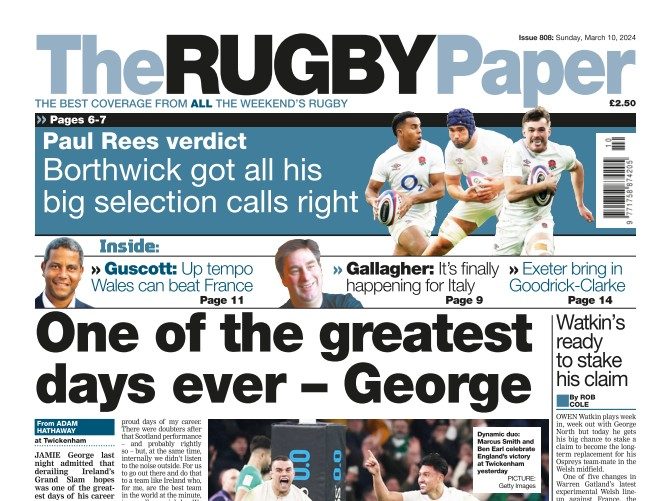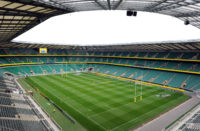The Rugby Hall of Fame was introduced in 2006 and it’s proved to be popular with rugby fans. The Hall of Fame allows rugby enthusiasts to pay homage to the rugby greats – both past and present – who made the game into one of the world’s most favoured sports.
History
The Rugby Hall of Fame opened in 2006 at the IRB Awards ceremony in Glasgow, Scotland. To nobody’s great surprise the first honoree was William Webb Ellis who is acknowledged as the originator of the game. The second round of awards was presented following the 2007 Rugby World Cup and it then started an annual trend which continues until today.
For the 2011 Hall of Fame Award the IRB presented the prize “under the theme of Rugby World Cup founders, visionaries and iconic figures.” In that year the awards were made in three groups — first for all World Cup-winning coaches and captains through that year’s World Cup, secondly for other top World Cup players and thirdly for the founders of the RWC.
That set into motion a pattern in which the Hall of Fame had an overriding theme. Today the Hall of Fame is known as the World Rugby Hall Of Fame and includes inductees representing many different aspects of the rugby world. Online casino gamers and rugby fans, alike, can learn about the history of rugby through the lives of the Rugby Hall of Famers.
Honourees
Some years have one Hall of Fame Awardee while others honoured multiple players, coaches and others. A selection of some of the honourees is as follows:
2006
The 2006 winner of the Rugby Hall of Fame was, obviously, rugby’s originator, Reverend William Webb Ellis. Ellis attended the Rugby School and, according to rugby legend, invented the game of rugby when, as a student, he picked up the ball and ran with it during a school football match.
t’s not clear, historically, if Ellis really did invent rugby. What is known is that he attended the Rugby School for nine years and it was during that time that the game was launched. The source of the story about Ellis came from Matthew Bloxam but it’s never been substantiated and sports historians are skeptical of its veracity.
Regardless of actual evidence, Ellis’s name is most closely associated with rugby’s beginnings and he will forever be remembered as the game’s inventor.
2008
The 2008 Rugby winner was Ned Haig who played for Scotland in the mid-1800s. Haig was best known for inventing rugby sevens which is played with 7 players per team instead of 15. The other major difference between rugby 7s and Ellis’s rugby is that the match length is 15 minutes, rather than the traditional 80 minutes. In the game seven players play seven minute halves, as opposed to the usual 15 players playing 40 minute halves.
Rugby 7s is still featured in the official Rugby Union schedule and is favored by many fans as a faster-moving, more intensive rugby experience.
2009
Bernie Osler, a South African, was named Rugby Hall of Fame winner in 2009. He is best remembered as a player developed the rugby kicking game style which gave teams the chance to promote a forward-oriented game (known as 10-man rugby). He played as a fly-half and his strategy involved kicking for territory rather than running with the ball or passing it to his backs. He was a highly-accurate kicker who led his team to numerous victories.
2011
Bob Dwyer is an Australian rugby coach who played rugby in school. He coached the Randwick club of Sydney to four Sydney championship wins before moving on to becoming the coach for Australia’s national team where he brought the team to victory at the 1991 Rugby World Cup.
His gruff style didn’t always sit well with his players but his ability to deliver persistent wins kept him as a favored coach of the fans and the management. When he moved to coach the Bristol Club the club returned to the Premiership, narrowly missing out on the qualification for the Heineken Cup. Over time Dwyer served as a forceful advocate for the club’s potential as a leader of British rugby, saying “the potential here is greater than in any other rugby city in England, including Leicester”.
2013
Ronnie Dawson was the Irish captain of the British and Irish Lions where he played hooker for Ireland. He was unusual in that he had multiple careers, not only as a rugby player but as a qualified architect and employee of the Bank of Ireland where he served as their Chief Architect and Head of their Premises Division.
In addition to his playing career Dawson served as president of the Leinster Club and as administrator on the Leinster Branch Executive Committee.
2016
The last year for which a Hall of Fame award has been given honored Jonathan Peter Wilkinson who played for England’s British and Irish Lions team. “Jonny” was acknowledged as one of the world’s best rugby union players, serving as an integral player for the winning English squad in the 2003 Rugby World Cup and leading England to the final of the 2007 World Cup.
About the Hall of Fame
To date 120 rugby pioneers, players and coaches have been inducted into the Hall of Fame. Established in 2006, the Hall of Fame absorbed the International Rugby Hall of Fame in 2014 to create one unified organization.
The physical Rugby Hall of fame is set in the town of Rugby. It is comprised of an art gallery and museum where the story of rugby is told and the Hall of Fame winners’ stories are featured.
Visitors can see sporting memorabilia and footage from World Rugby’s video archive which celebrate the star players and key moments of the game. The exhibition provides a short history of rugby including development and expansion of the game around the world.
























